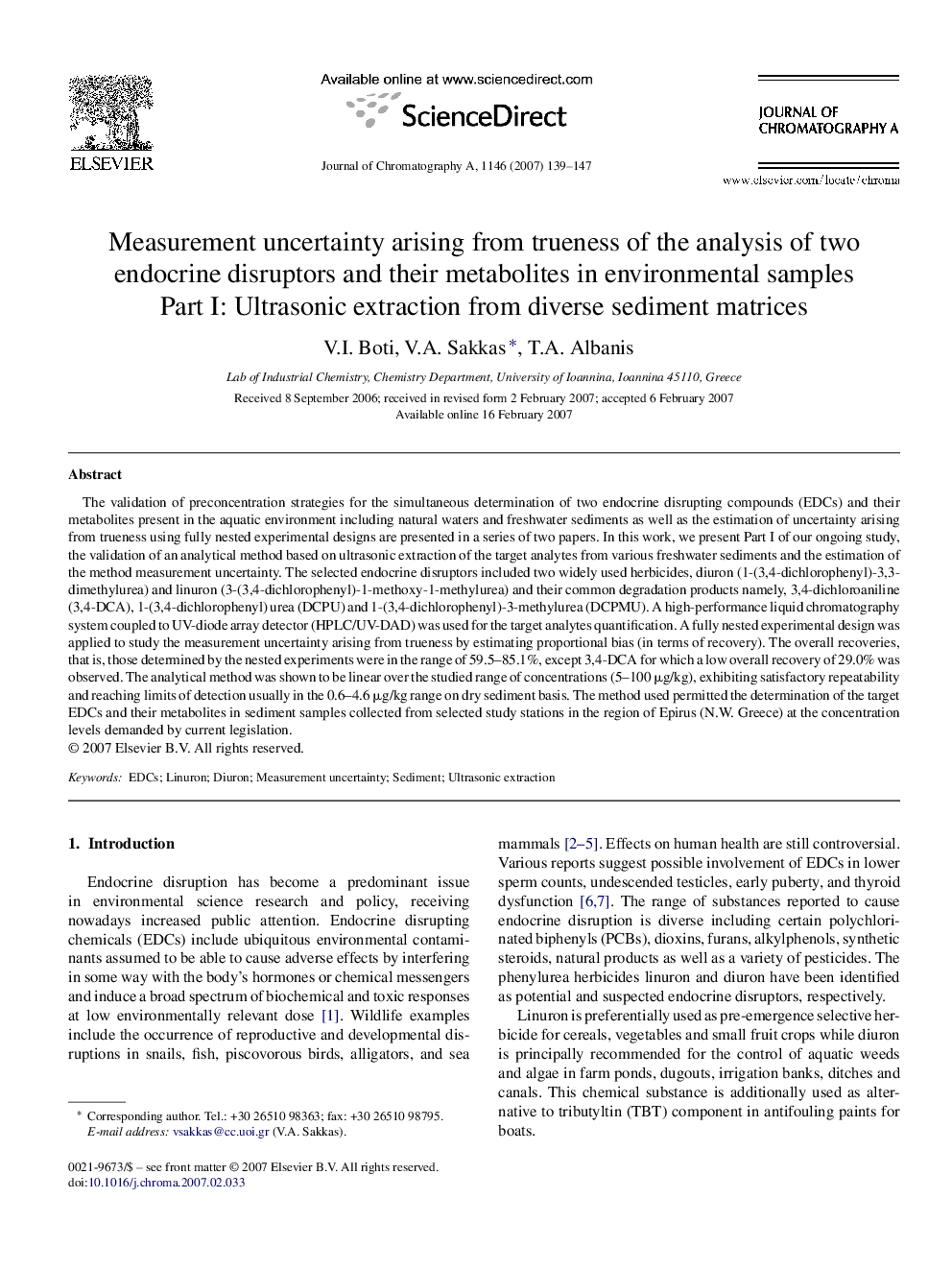| Article ID | Journal | Published Year | Pages | File Type |
|---|---|---|---|---|
| 1209145 | Journal of Chromatography A | 2007 | 9 Pages |
Abstract
The validation of preconcentration strategies for the simultaneous determination of two endocrine disrupting compounds (EDCs) and their metabolites present in the aquatic environment including natural waters and freshwater sediments as well as the estimation of uncertainty arising from trueness using fully nested experimental designs are presented in a series of two papers. In this work, we present Part I of our ongoing study, the validation of an analytical method based on ultrasonic extraction of the target analytes from various freshwater sediments and the estimation of the method measurement uncertainty. The selected endocrine disruptors included two widely used herbicides, diuron (1-(3,4-dichlorophenyl)-3,3-dimethylurea) and linuron (3-(3,4-dichlorophenyl)-1-methoxy-1-methylurea) and their common degradation products namely, 3,4-dichloroaniline (3,4-DCA), 1-(3,4-dichlorophenyl) urea (DCPU) and 1-(3,4-dichlorophenyl)-3-methylurea (DCPMU). A high-performance liquid chromatography system coupled to UV-diode array detector (HPLC/UV-DAD) was used for the target analytes quantification. A fully nested experimental design was applied to study the measurement uncertainty arising from trueness by estimating proportional bias (in terms of recovery). The overall recoveries, that is, those determined by the nested experiments were in the range of 59.5-85.1%, except 3,4-DCA for which a low overall recovery of 29.0% was observed. The analytical method was shown to be linear over the studied range of concentrations (5-100 μg/kg), exhibiting satisfactory repeatability and reaching limits of detection usually in the 0.6-4.6 μg/kg range on dry sediment basis. The method used permitted the determination of the target EDCs and their metabolites in sediment samples collected from selected study stations in the region of Epirus (N.W. Greece) at the concentration levels demanded by current legislation.
Related Topics
Physical Sciences and Engineering
Chemistry
Analytical Chemistry
Authors
V.I. Boti, V.A. Sakkas, T.A. Albanis,
